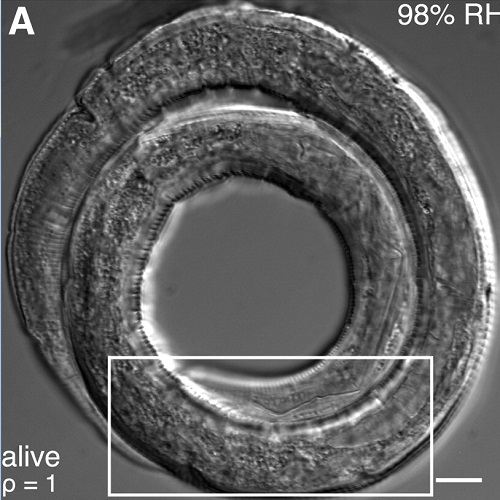Trehalose renders the dauer larva of Caenorhabditis elegans resistant to extreme desiccation.
Water is essential for life on Earth. In its absence, however, some organisms can interrupt their life cycle and temporarily enter an ametabolic state, known as anhydrobiosis [1]. It is assumed that sugars (in particular trehalose) are instrumental for survival under anhydrobiotic conditions [2]. However, the role of trehalose remained obscure because the corresponding evidence was purely correlative and based mostly on in vitro studies without any genetic manipulations of trehalose metabolism. In this study, we used C. elegans as a genetic model to investigate molecular mechanisms of anhydrobiosis. We show that the C. elegans dauer larva is a true anhydrobiote: under defined conditions it can survive even after losing 98% of its body water. This ability is correlated with a several fold increase in the amount of trehalose. Mutants unable to synthesize trehalose cannot survive even mild dehydration. Light and electron microscopy indicate that one of the major functions of trehalose is the preservation of membrane organization. Fourier-transform infrared spectroscopy of whole worms suggests that this is achieved by preserving homogeneous and compact packing of lipid acyl chains. By means of infrared spectroscopy, we can now distinguish a "dry, yet alive" larva from a "dry and dead" one.

- Curr. Biol. 2011 Aug 9;21(15):1331-6
- 2011
- Developmental Biology
- 21782434
- PubMed
Enabled by:
